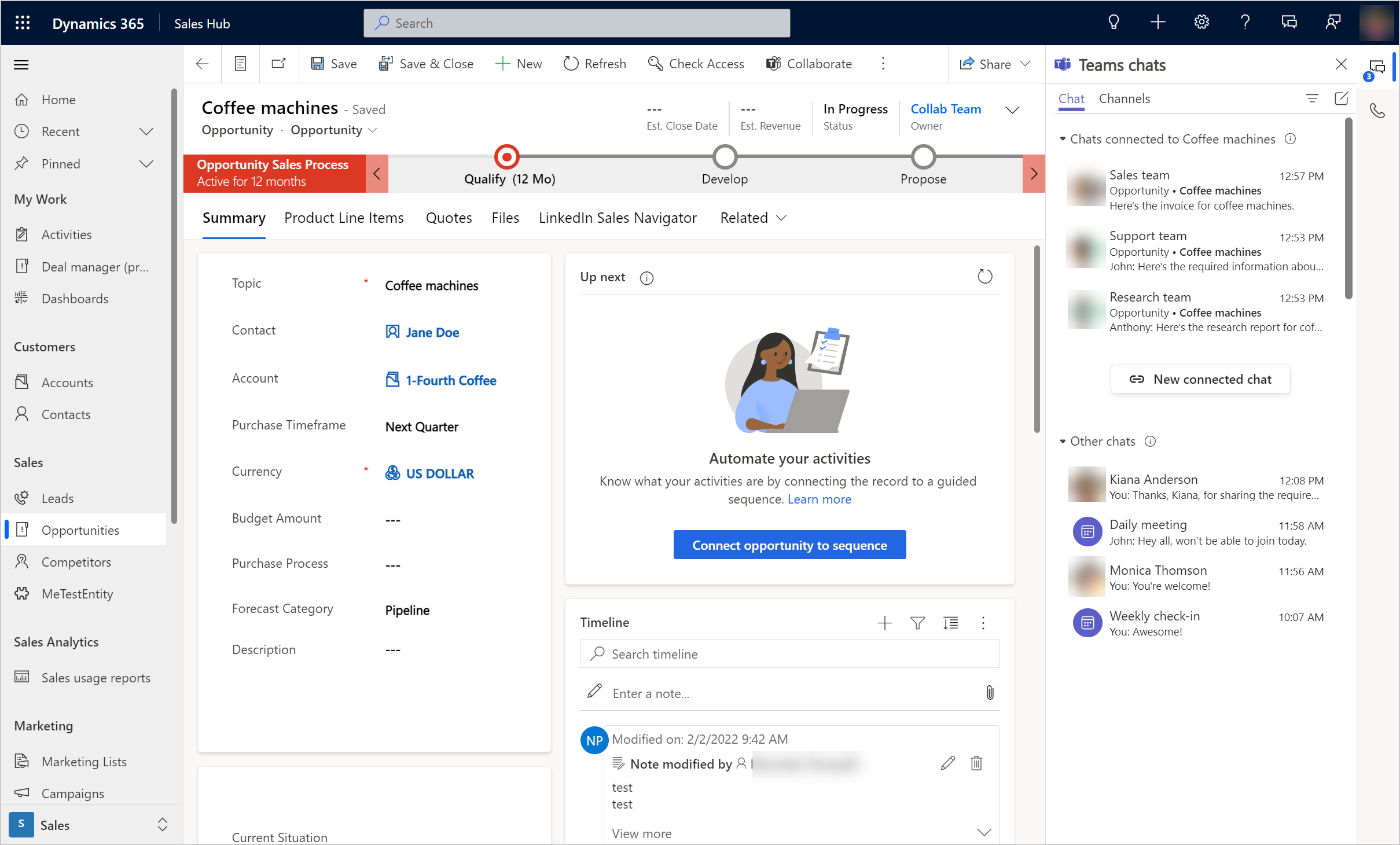Introduction
In today's integrated digital environment, tools such as Microsoft's Dynamics 365 (D365) and Teams stand out. These tools are transforming how we view teamwork and business operations. Their goal? To provide a seamless workflow and reduce the need to juggle multiple apps. In this article, we'll delve deeper into the capabilities of D365 and Teams integration.
The Power of Embedded Chat in Dynamics 365
Dynamics 365 boasts a powerful feature – the integration of Teams chat. This integration allows users to converse in real-time directly within D365. With the Teams integration, you can seamlessly invite colleagues to access and work on customer records directly within a Teams chat or channel. Dynamics 365 also enables calls, streamlining workflows. For example, a salesperson in D365 can instantly liaise with marketing, product development, or other teams without switching apps. Customer service agents can easily share case details, troubleshoot actions, and monitor subsequent tasks.
One of the notable attributes of this integrated feature is its flexibility. Teams chat can be embedded across any D365 record, ensuring versatility for different business models, whether it's leads, accounts, contacts, or opportunities.
By integrating Teams, it becomes the go-to collaboration hub. Chat-based interactions occur here, even if the other party isn't using the CRM system. Plus, chats can be linked to specific D365 records. It keeps relevant conversations organized, improving clarity and ease of access.
Real-time Awareness
Another benefit is real-time user status updates. If two users view the same D365 record simultaneously, they're instantly informed of each other’s presence, much like when collaborating on an online Word or PowerPoint file.

Smart Contacts and Enhanced Collaboration
To enhance user interaction further, the D365-Teams integration offers suggested contacts based on the current record. For instance, if two users view the same opportunity record, the system may suggest they initiate a chat with the record's owner, facilitating faster collaboration.

Teams Meetings
With the integration of Microsoft Teams, you can effortlessly transition between Dynamics 365 and Teams. Within Dynamics 365, it's simple to create and join Teams meetings. Moreover, you can smoothly view and update Dynamics 365 records while in a Teams meeting. Any notes or tasks you capture during the meeting will automatically synchronize with Dynamics 365.

Leveraging Microsoft Loop Components
With Microsoft Loop components, users can pull data from D365 straight into Teams or Outlook. But it's more than just viewing; users can edit and work on this data collaboratively in real time, seamlessly connecting different business applications.

File Synchronization
With Microsoft 365, co-author documents that automatically align with related Dynamics 365 records in a Teams channel. Files added to Teams connect to Dynamics 365, and vice versa, they appear in the Teams channel when uploaded in Dynamics 365.


Dashboard Management
Utilize the Dynamics 365 app to configure and monitor your individual dashboard within Teams.

Licensing Benefits and Collaboration
This collaborative model also offers a financial incentive. Colleagues who don't operate within D365 don't require a Dynamics license to join these integrated chats. It opens a broader spectrum of collaboration without the associated costs.
Conclusion
Seamless system integration boosts productivity and streamlines collaboration. Merging Microsoft Dynamics 365 CRM with Teams transforms business workflows, enabling efficient communication and direct access to essential tools. Emphasizing this integration is the key to agile and effective business operations in today's digital landscape.

